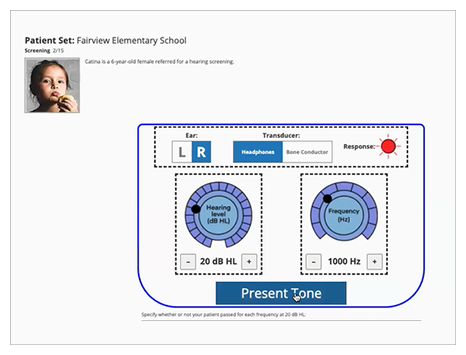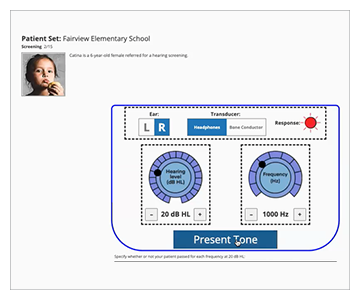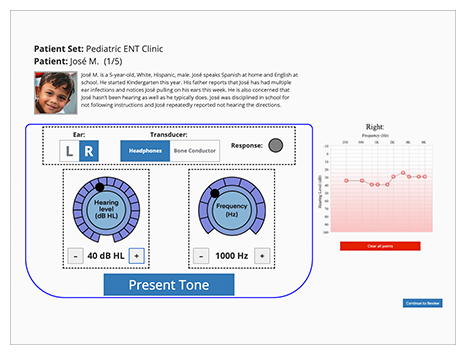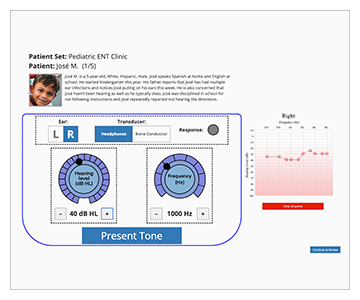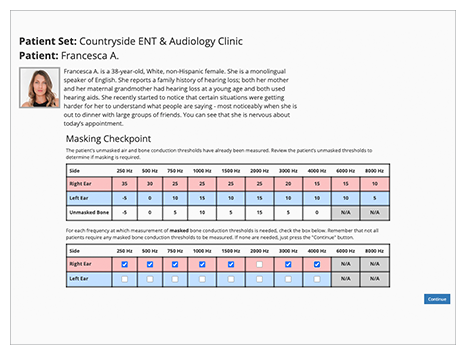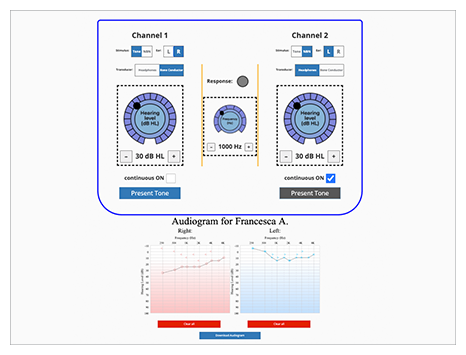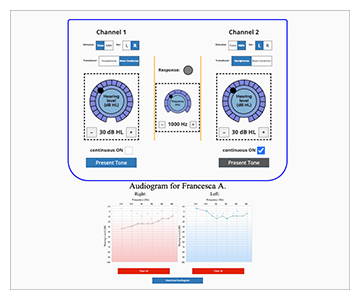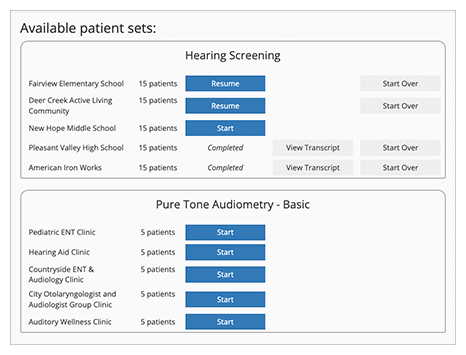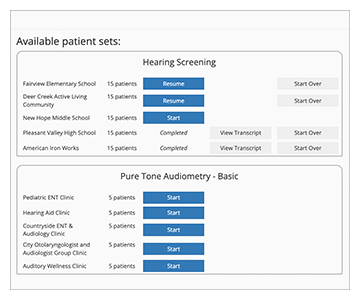An interactive online learning tool
Simucase Audiolab is an interactive online audiometer. Audiolab teaches audiology and speech-language pathology students how to:
- Administer pure-tone hearing tests
- Obtain hearing thresholds
- Practice masking
- Assess diverse patient populations
- Recognize different types of hearing loss
For students with active Simucase memberships, Audiolab access is free!
Hearing Screenings
Students have the opportunity to administer hearing screenings to 75 patients in five different pediatric and adult settings. Each student can earn clinical hours following a debrief session with a supervisor.*
To begin, a student chooses a patient set to screen, then selects the frequencies and screening dB level.
The student receives feedback for incorrect decisions, and they cannot move on to the next patient until they complete the screening correctly. On completion, they can report their results and go to the next patient.
When they finish screening all 15 patients, the student can download their reports to provide to their instructor.
Pure-Tone Audiometry - Basic
Students have the opportunity to complete pure-tone hearing testing and to plot audiograms in Basic Mode.
Basic Mode includes 25 patients at five different pediatric and adult settings. Each student can earn clinical hours following a debrief session with a supervisor.*
To begin, a student chooses a patient set to test. Then they select the appropriate dB levels and frequencies using standard clinical procedures to obtain thresholds.
In these simulations, virtual patients will respond as patients might in the real world; they may be inconsistent in their responses when they are at or near thresholds. The student can plot audiograms as they test a patient’s hearing.
Once testing is complete, the student can report their results. The student receives feedback for incorrect decisions, and they cannot move on to the next patient until they complete the evaluation correctly.
Pure-Tone Audiometry - Advanced
Students have the opportunity to determine if a patient needs masking by reviewing the pure-tone audiometry results in Advanced Mode. Students can then practice calculating masking levels, selecting channels, and completing masking for bone conduction.
Advanced Mode includes 10 patients at two different settings. Each student can earn clinical hours following a debrief session with a supervisor.*
To begin, a student chooses a patient set to test. The student then completes the masking checkpoint to determine if the patient requires masking.
If masking is not required, the student advances to the next patient. If masking is required, the student calculates and sets the masking level, applies continuous noise to the appropriate channel, and presents a tone.
When they complete testing, the student can plot audiograms and report their results. The student receives feedback for incorrect decisions, and they cannot move on to the next patient until they complete the evaluation correctly.
Reporting
For all sets, student activity is saved and is available as a PDF report.
